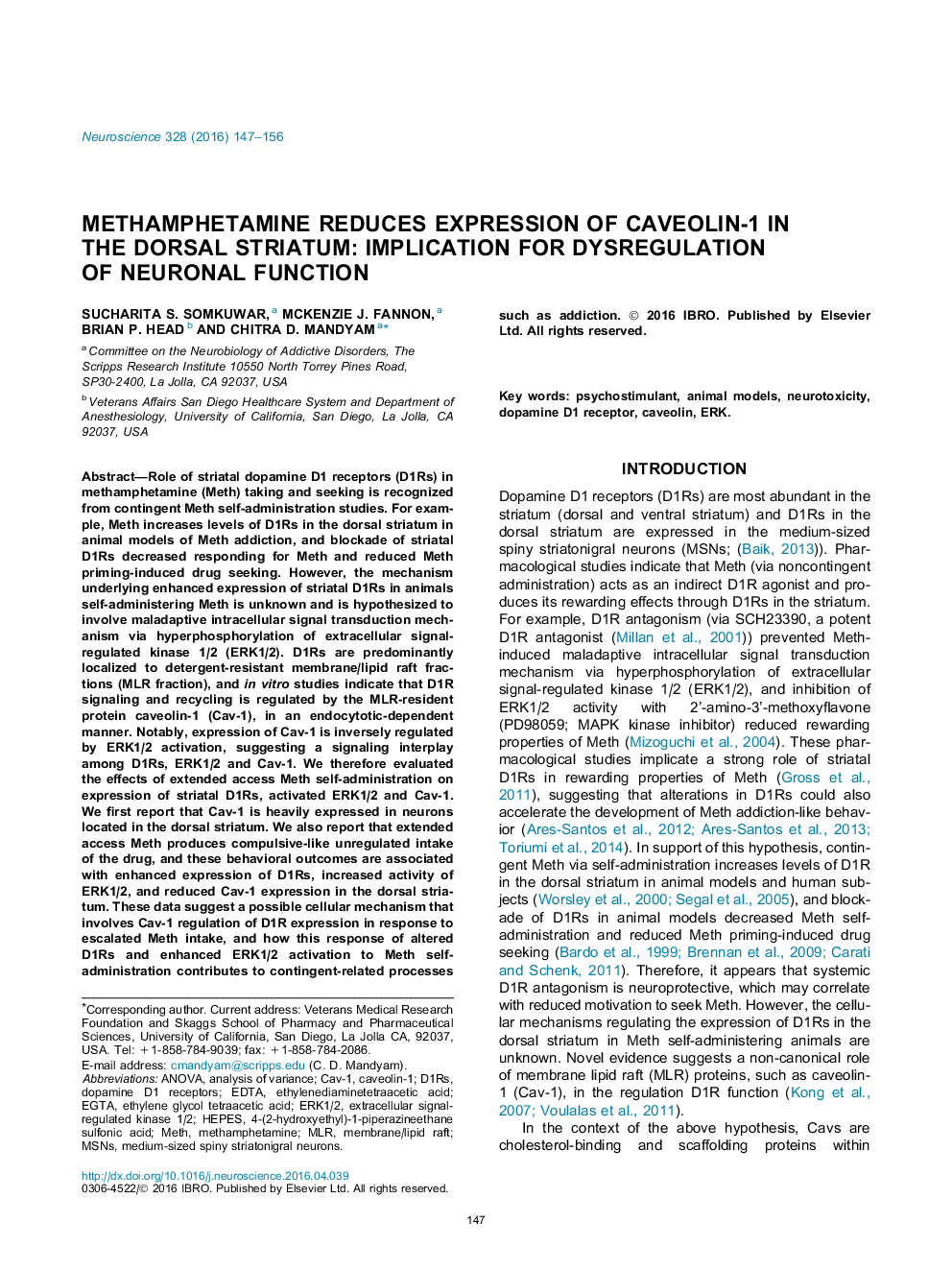| کد مقاله | کد نشریه | سال انتشار | مقاله انگلیسی | نسخه تمام متن |
|---|---|---|---|---|
| 6271114 | 1614748 | 2016 | 10 صفحه PDF | دانلود رایگان |
- Extended access to Meth produces unregulated Meth intake.
- Chronic Meth enhances expression of dopamine D1 receptors in the striatum.
- Enhanced D1 receptor expression is associated with hyperactivity of ERK1/2.
- Hyperactivity of ERK1/2 is associated with reduced expression of Caveolin-1.
Role of striatal dopamine D1 receptors (D1Rs) in methamphetamine (Meth) taking and seeking is recognized from contingent Meth self-administration studies. For example, Meth increases levels of D1Rs in the dorsal striatum in animal models of Meth addiction, and blockade of striatal D1Rs decreased responding for Meth and reduced Meth priming-induced drug seeking. However, the mechanism underlying enhanced expression of striatal D1Rs in animals self-administering Meth is unknown and is hypothesized to involve maladaptive intracellular signal transduction mechanism via hyperphosphorylation of extracellular signal-regulated kinase 1/2 (ERK1/2). D1Rs are predominantly localized to detergent-resistant membrane/lipid raft fractions (MLR fraction), and in vitro studies indicate that D1R signaling and recycling is regulated by the MLR-resident protein caveolin-1 (Cav-1), in an endocytotic-dependent manner. Notably, expression of Cav-1 is inversely regulated by ERK1/2 activation, suggesting a signaling interplay among D1Rs, ERK1/2 and Cav-1. We therefore evaluated the effects of extended access Meth self-administration on expression of striatal D1Rs, activated ERK1/2 and Cav-1. We first report that Cav-1 is heavily expressed in neurons located in the dorsal striatum. We also report that extended access Meth produces compulsive-like unregulated intake of the drug, and these behavioral outcomes are associated with enhanced expression of D1Rs, increased activity of ERK1/2, and reduced Cav-1 expression in the dorsal striatum. These data suggest a possible cellular mechanism that involves Cav-1 regulation of D1R expression in response to escalated Meth intake, and how this response of altered D1Rs and enhanced ERK1/2 activation to Meth self-administration contributes to contingent-related processes such as addiction.
Journal: Neuroscience - Volume 328, 22 July 2016, Pages 147-156
